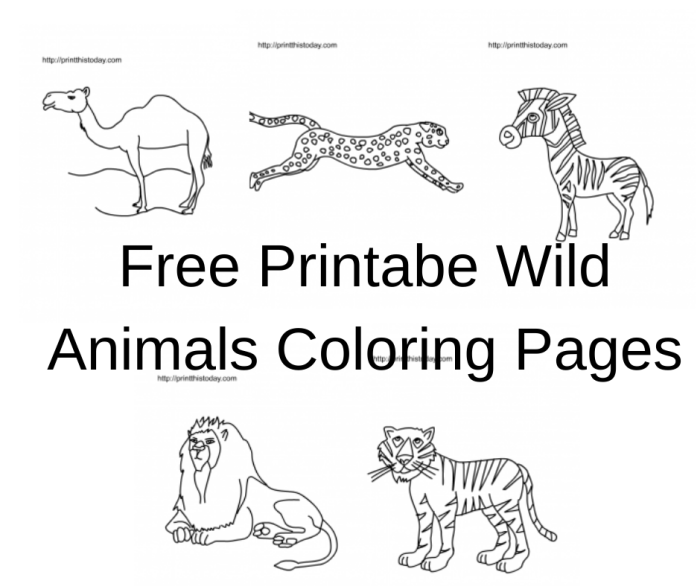Illustrative Techniques and Styles for Coloring Pages
Coloring book coloring pages – Creating engaging and visually appealing coloring pages requires careful consideration of various illustrative techniques and styles. The choice of style significantly impacts the final product’s aesthetic appeal and the overall coloring experience. Different styles cater to diverse audiences and artistic preferences, from the intricate detail of botanical illustrations to the simplified forms of manga.
Realistic Botanical Illustrations
Creating a realistic botanical coloring page involves meticulous observation and precise rendering of plant forms. The process begins with detailed sketches from life or high-quality reference photographs. Accurate proportions, leaf venation, and subtle variations in texture are crucial. The linework should be clean and consistent, utilizing varying line weights to create depth and highlight key features. Consider using a combination of fine-liner pens and pencils to achieve different levels of detail.
Shading can be suggested through the use of stippling or hatching within the line art, providing a guide for the colorist to enhance the three-dimensionality of the illustration. Finally, careful attention to the composition of the elements within the page will create a visually pleasing arrangement for the colorist.
Line Weight and Texture in Different Coloring Page Styles
Line weight and texture are fundamental elements that define the style and aesthetic of a coloring page. In manga-style coloring pages, line weight is often dramatically varied to create emphasis and movement. Thick lines define contours and major features, while thin lines are used for details and shading. Texture is often minimal, focusing on clean lines and smooth surfaces.
Mandala coloring pages, in contrast, utilize intricate patterns and repetitive motifs. Line weight is generally consistent, creating a sense of uniformity and balance. Texture is implied through the dense layering of patterns and the use of varying line styles (e.g., dotted, dashed). Zentangle art, similarly, emphasizes repetitive patterns and textures created through the careful arrangement of lines and dots.
Line weight remains relatively consistent, but the texture is significantly emphasized, creating a rich visual experience.
Color Palettes for Adult Coloring Books
Three distinct color palettes suitable for adult coloring books, each evoking different emotional responses, are:
- Earthy Tones: This palette utilizes browns, greens, oranges, and creams. It evokes feelings of calmness, grounding, and connection to nature. It’s ideal for pages with botanical themes or landscapes.
- Cool Blues and Purples: This palette incorporates various shades of blue, purple, and teal. It creates a sense of serenity, tranquility, and introspection. It is well-suited for mandalas or abstract designs.
- Vibrant Jewel Tones: This palette uses rich, saturated colors such as ruby red, emerald green, sapphire blue, and amethyst purple. It evokes feelings of energy, excitement, and luxury. It works well with pages featuring fantastical creatures or intricate patterns.
Visually Appealing Composition Using the Rule of Thirds, Coloring book coloring pages
The rule of thirds is a fundamental principle in visual composition. To create a visually appealing coloring page, divide the page into nine equal parts using two equally-spaced horizontal lines and two equally-spaced vertical lines. Important elements, such as the main subject or focal point, should be placed along these lines or at their intersections. This creates a more dynamic and engaging composition compared to centering the subject.
For example, in a botanical coloring page featuring a single flower, the flower might be placed at the intersection of one horizontal and one vertical line, leaving space around it for visual breathing room. This creates a balanced and aesthetically pleasing layout.
Question Bank: Coloring Book Coloring Pages
What type of paper is best for coloring books?
Thicker paper, like cardstock, is ideal to prevent bleed-through, especially with markers or watercolors. Heavier weight paper also allows for layering and blending techniques.
How can I protect my finished coloring pages?
Once finished, consider using a sealant spray to protect your artwork from smudging or fading. Framing your pages is another great way to preserve and display your creations.
What software is best for creating digital coloring pages?
Popular choices include Adobe Illustrator, Procreate, and Clip Studio Paint, each offering a range of tools for creating intricate line art and designs. The best software depends on your skill level and preferences.
Where can I find inspiration for coloring page designs?
Look to nature, patterns, mandalas, geometric designs, and even pop culture for inspiration! Pinterest, Instagram, and online art communities are great resources for finding new ideas and techniques.
Children often enjoy the simple pleasure of coloring book coloring pages, expressing their creativity with vibrant hues. This creative outlet can be surprisingly diverse; for instance, the album art for the chance the rapper coloring book mixtape inspired many unique coloring pages based on its imagery. The connection shows how even musical inspiration can find expression in the familiar world of coloring book coloring pages, offering a unique artistic bridge.

